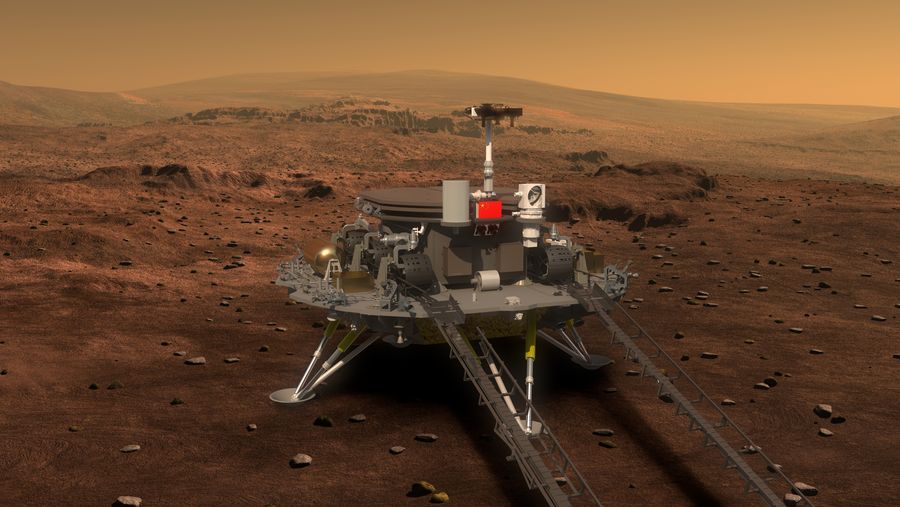Mars probe arrives at Hainan launch site in South China


Tianwen 1, a Chinese Mars probe, has been transported to South China's Hainan province, where it is set to be launched atop a Long March 5 carrier rocket in the coming days, Beijing Daily reported on Tuesday.
The spacecraft, developed by the China Academy of Space Technology, is now undergoing pre-launch preparations at the Wenchang Space Launch Center in the coastal city of Wenchang before lift-off on China's first independent Mars exploration, the newspaper said, without elaborating.
According to the China Aerospace Science and Technology Corp, a State-owned space conglomerate, the Tianwen 1, or Quest for Heavenly Truth 1, mission will fulfill three scientific objectives: Orbiting the red planet for comprehensive observation; landing on Martian soil; and sending a rover to roam the landing site. It will conduct scientific investigations about Martian soil, geological structure, environment and atmosphere, as well as water.
If Tianwen 1 succeeds, it will become the world's first Mars expedition accomplishing all three goals with one probe, the company said.
Tianwen is a long poem by famous ancient poet Qu Yuan of the Kingdom of Chu during the Warring States Period (475-221 BC). He is known for his patriotism and contributions to classical poetry and verses, especially through the poems of the Chu Ci anthology, also known as Songs of Chu.
In the first step of the mission, a Long March 5, the nation's largest and most powerful rocket, will blast off at the Wenchang center to transport the robotic probe to the Earth-Mars transfer trajectory before the spacecraft begins its self-propelled flight toward Mars' gravity field.
The farthest distance between the Earth and Mars is about 400 million kilometers while the nearest is 55 million km, so a probe will travel about seven months before it reaches the Martian atmosphere.
The space contractor said the probe consists of three parts – the orbiter, the lander and the rover – and they will separate in Mars' orbit. The orbiter will stay in orbit for scientific operations and signal relay while the lander-rover combination will make an autonomous descent and landing.
The rover, which is expected to become the world's seventh of its kind and the first from Asia, has six wheels and four solar panels and carries six scientific instruments. It weighs more than 200 kilograms and will work for about three months on the planet, designers said.
- Over 700 generative AI large model products complete filing in China
- Beijing accuses Lai of 'kowtowing' to US
- Hong Kong's global standing boosted with increasing presence of intl organizations: justice secretary
- China Coast Guard accuses Taiwan regional authorities of hyping up patrols
- Crossing the Strait: Explore Taiwan cuisine in Beijing
- China condemns US defense bill provisions as interference





































